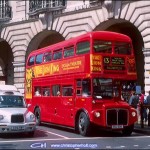 This week I’ve been talking a bit about the axis along which many organisations sit, with make and sell at one end, and sense and respond at the other. I’ve provided you with a few metrics by which you can assess your own organisation to see where you fit, but as with many concepts, an analogy is often a nice way to understand things.
This week I’ve been talking a bit about the axis along which many organisations sit, with make and sell at one end, and sense and respond at the other. I’ve provided you with a few metrics by which you can assess your own organisation to see where you fit, but as with many concepts, an analogy is often a nice way to understand things.
A nice example therefore that typifies the distinction between make and sell and sense and respond is in the field of public transport, and in particular the distinction between buses and taxis.
Buses for me are typical of make and sell companies. They do their best to understand traffic trends, passenger journey’s and so on. They then build a route map and schedule buses to travel that route at the prescribed times. The drivers aren’t judged on passenger satisfaction as much as on driving the route as instructed. Very little flexibility is built into the business model to take account for rapid shifts in customer demand. This is what we offer, this is when we offer it, take it or leave it.
Taxi drivers by contrast are the polar opposite. They don’t have any prescribed plan in place. There is no real central planning involved in the taxi system. There are some informal rules that cabbies tend to abide by but apart from that they typically go where the custom is and take a customer centric approach to the journey by attempting to get them from A to B in the shortest time possible. Their use of The Knowledge means routes are adaptable based upon their knowledge of the conditions at that time and the feedback they’re receiving from the market.
IBM conducted a survey recently that found that the complexity of the modern economy was the single biggest challenge facing executives, and that the most successful companies co-create products with their customers.
In such an environment, ask yourself, are you and your organisation more like a bus or a taxi?
Nice analogy. Makes it much easier to understand the concept of an adaptive organisation.